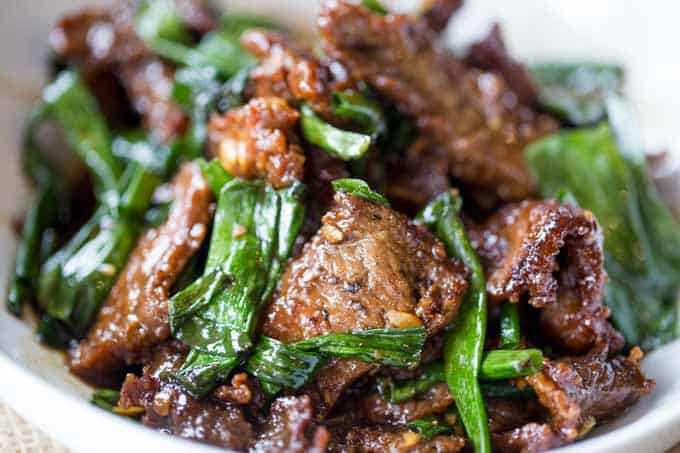The world of culinary art is a diverse tapestry woven with flavors and traditions from every corner of the globe. Among these exquisite offerings stands Mongolian-style beef, a dish that captures the essence of Mongolian culture and tantalizes taste buds with its bold, savory flavors. As we embark on a gastronomic journey, this article dives into the heart of Mongolian-style beef, uncovering its origins, ingredients, preparation techniques, and the cultural significance that makes it a beloved delicacy.
- Unveiling the Origins: Mongolian Culinary Heritage
a. Cultural Roots: Mongolian cuisine reflects the nomadic lifestyle of the Mongolian people, who historically relied on hearty, simple ingredients that could sustain them through the rugged landscapes of the Mongolian steppes.
b. Historical Traditions: The art of preparing and cooking meat is deeply rooted in Mongolian culture, with techniques developed over centuries to make the most of limited resources and challenging environments.
c. Influences and Adaptations: While Mongolian-style beef has ancient origins, it’s worth noting that regional variations and adaptations have occurred over time due to trade, migrations, and cultural interactions.
- Essence of Flavor: Key Ingredients
a. Beef: At the core of Mongolian-style beef is tender slices of beef, chosen for their ability to absorb the rich flavors of the dish during the cooking process.
b. Soy Sauce: Soy sauce infuses the beef with its distinctive umami flavor, while also adding a savory depth to the overall taste.
c. Garlic and Ginger: Fresh garlic and ginger are essential aromatic components that lend their fragrant notes to the dish, enhancing the sensory experience.
d. Scallions: Scallions provide a burst of freshness and color to the dish, balancing the robust flavors with their mild, onion-like essence.
e. Sesame Oil: A drizzle of sesame oil imparts a nutty undertone that complements the other ingredients and elevates the dish’s overall profile.
- Mongolian-Style Beef: A Culinary Symphony
a. Marinating the Beef: The process begins with marinating thin slices of beef in a mixture of soy sauce, minced garlic, grated ginger, and a touch of sesame oil. This step allows the meat to absorb the marinade’s flavors, tenderizing it and creating a harmonious base for the dish.
b. Stir-Frying Technique: Mongolian-style beef is often prepared using a stir-frying technique, a hallmark of Mongolian cuisine. High heat and quick cooking ensure that the beef retains its tenderness and captures the essence of the marinade.
c. Wok Mastery: A wok, the quintessential cooking vessel in Mongolian cuisine, is used to stir-fry the marinated beef and vegetables. The wok’s shape and heat distribution play a crucial role in achieving the desired flavor and texture.
d. Balancing Flavors: The combination of salty soy sauce, pungent garlic, warming ginger, and the nuttiness of sesame oil creates a symphony of flavors that dance across the palate in perfect harmony.
e. Vegetable Medley: Alongside the beef, a colorful medley of vegetables such as bell peppers, carrots, and scallions is stir-fried, contributing not only to the dish’s visual appeal but also to its nutritional richness.
- Cultural Significance: More Than Just a Dish
a. Nomadic Heritage: Mongolian-style beef echoes the culinary traditions of the Mongolian nomads, showcasing their ingenuity in making the most of available resources.
b. Hospitality and Sharing: In Mongolian culture, sharing a meal is an act of hospitality and camaraderie. Mongolian-style beef, often prepared in generous portions, embodies this spirit of sharing.
c. Festive Occasions: Mongolian-style beef is often prepared during festive occasions and gatherings, where its flavorful profile adds a touch of celebration to the meal.
d. Embracing Simplicity: The simplicity of the dish’s preparation aligns with the nomadic way of life, where practicality and flavor go hand in hand.
- Variations and Modern Adaptations
a. Regional Twists: While the core components remain consistent, variations of Mongolian-style beef may incorporate local ingredients and spices, resulting in unique regional interpretations.
b. Vegetarian Options: To cater to different dietary preferences, variations of the dish replace beef with tofu or seitan, offering a plant-based alternative without compromising on flavor.
c. Mongolian BBQ: In some restaurants, Mongolian-style beef is served as part of the interactive Mongolian BBQ experience, where patrons create their own custom stir-fry dishes.
- Embracing the Experience: Preparing Mongolian-Style Beef at Home
a. Ingredient Selection: Begin by choosing high-quality beef cuts that are well-suited for stir-frying, such as flank steak or sirloin.
b. Marinating: Allow the beef to marinate for at least 30 minutes, giving the flavors ample time to infuse the meat.
c. Stir-Frying Technique: Achieving the perfect stir-fry involves high heat, quick cooking, and continuous stirring to prevent overcooking and ensure even distribution of flavors.
d. Balancing Flavors: Taste as you cook to adjust the seasoning, ensuring that the flavors are well-balanced and harmonious.
e. Veggie Selection: While bell peppers and carrots are common choices, feel free to experiment with other vegetables to create your own signature variation.
- Savoring Every Bite: The Culinary Romance of Mongolian-Style Beef
Mongolian-style beef is more than just a dish; it’s a journey through the heart of Mongolia’s nomadic heritage and a celebration of the culinary traditions that have stood the test of time. Each slice of tender beef captures the essence of the past while embracing the flavors of the present. As you savor every bite of Mongolian-style beef, you’re not only indulging in a delicious culinary experience but also immersing yourself in the rich cultural tapestry that has shaped this exceptional dish.
